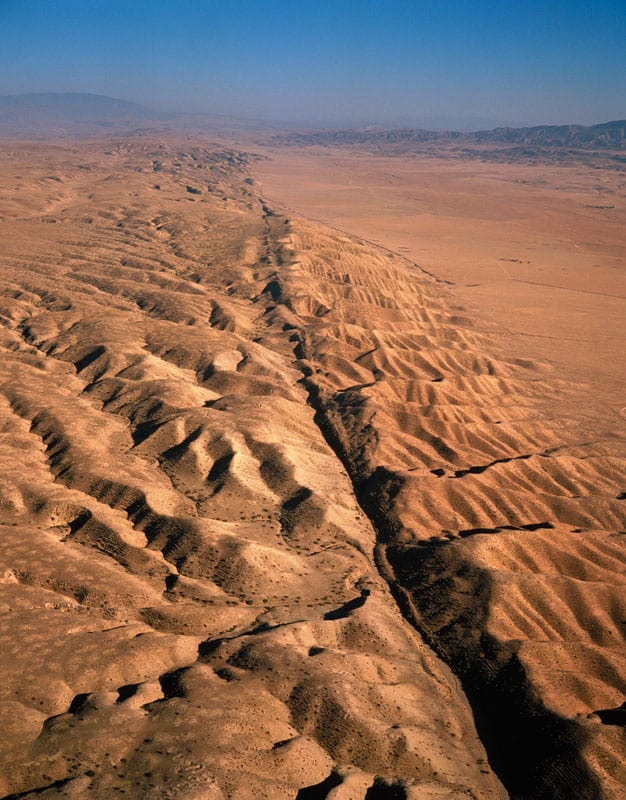
The more than 1 million kilometres of fibre-optic cable that criss-crosses the world’s oceans could be used to create a global seismic network, says an international team of scientists. They have shown that variations in the phase of ultra-stable laser beams sent down optical fibres could be used to detect even quite small earthquakes occurring far out at sea – something that is not possible today.
Although 70% of the Earth’s surface is covered by water, the vast majority of seismometers are located on land. That means that almost any earthquake with a magnitude of about 4 or below generated more than a few hundred kilometres from the coast goes undetected. This makes it difficult to identify the mechanisms responsible for powerful mid-ocean quakes, as well as limiting the study of Earth’s interior using seismic waves.
Installing conventional seismometers on the sea floor is expensive and it has been estimated that an oceans-wide network would cost between $700m and $1bn. Although less sensitive than conventional seismometers, a network using existing telecoms fibres could cover a vast area of the sea floor much more cheaply, according to Giuseppe Marra of the National Physical Laboratory in the UK and colleagues. They say such a network could detect even small quakes occurring within a few hundred kilometres at any point along a fibre. It would require no new work at sea and would use just one of the 100 or so data channels in each fibre. The main cost would come from adding a roughly $50,000 laser at either end of each fibre.
Phase changes
The detection technique involves sending an exceptionally stable beam from each laser in opposite directions along the fibre and monitoring tiny variations in the beams’ phase. Seismic waves from an earthquake cause a characteristic series of very slight expansions and contractions in the fibre, resulting in changes to the optical path length and hence the phase of the optical signal.
With just 1 s of data taking, Marra says it is possible to measure micron-scale length changes over thousands of kilometres of cable. “This relies on having a very stable laser,” he explains. “If you were to use a standard commercial laser you wouldn’t know whether phase changes were due to fibre movement or laser instability.”
These stable lasers have been developed for comparing the time kept by optical atomic clocks using a fibre link. Indeed, it was while monitoring a 80 km link between clocks in England on 26 October 2016 that Marra saw a “wiggle” in the laser signal that he attributed to a magnitude-5.9 quake in central Italy. Looking back in the data, he saw a wiggle that corresponded to the magnitude-6 earthquake that devastated Amatrice, Italy two months earlier. He was also able to confirm that the waveforms of the two quakes seen in the fibre matched those recorded by the British Geological Survey and went on to record quakes from New Zealand, Mexico and Japan.
Confidence at sea
Next, Marra got together with researchers at the National Institute of Metrological Research (INRiM) in Italy to test the technique using two other stretches of fibre. One is a 535 km-long link between Turin and Bologna and the other and undersea link between Malta and Sicily. The undersea link managed to detect a weak (magnitude-3.4) tremor about 90 km from the fibre, which Marra says, “gave us confidence that we can do this on the sea floor”.

How to forecast an earthquake
The latest research is not the first time that scientists have used optical fibre to detect earthquakes. Last November, Biondo Biondi of Stanford University in the US and colleagues picked up signals from hundreds of tremors using a 5 km-circumference loop of fibre on the Stanford campus. That relied on measuring variations in round-trip travel time of laser pulses that bounced off tiny impurities in the fibre. While it could be used to create dense arrays of seismic sensors in quake-prone California, the range of the system is limited to few tens of kilometres.
Marra and colleagues are now busy refining their technique. Having shown how to establish where a seismic wave hits the fibre, the group plans to use two such links to pin down a quake’s (2D) epicentre and three links to nail its (3D) hypocentre. Working out a quake’s magnitude, meanwhile, might need fresh experiments to calibrate the optical signal.
The number of cables is growing exponentially so the possibilities for us are growing as well
Giuseppe Marra
The team must also persuade telecoms companies to provide access to fibres. Discussions are at an early stage, and Marra is optimistic. With high-bandwidth fibre now being laid down by companies, he reckons that he and his colleagues might be able to “repurpose” old undersea cables, and could also rent channels in existing cables. “The number of cables is growing exponentially,” he says, “so the possibilities for us are growing as well.”
Biondi reckons that averaging signals over the length of a fibre might significantly limit analysis of an earthquake’s “source mechanisms”. But given the cost and sparsity of existing submarine detectors, he thinks the fibre technology is “exciting and will lead to new insights”.
The research is described in Science.



